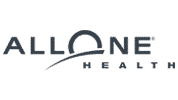How PPC Can Help Dentists Attract High-Value Patients
The dental industry is increasingly competitive, and attracting high-value patients—those who require advanced or ongoing treatments—has become a priority for many dental practices. With traditional marketing methods becoming less effective and more expensive, many dentists are turning to Pay-Per-Click (PPC) advertising to reach the right audience. Google Ads offers a powerful way to target individuals actively searching for dental services, allowing practices to direct their marketing efforts at people most likely to convert into high-value patients.
PPC advertising allows dental practices to increase visibility, drive targeted traffic, and focus on attracting patients who are more likely to require high-cost services such as implants, orthodontics, or cosmetic procedures. Since dental services can be highly specialized, it’s crucial to design PPC campaigns that focus on high-intent keywords, specific patient needs, and location-based targeting to ensure ads are being shown to the right audience. With the right strategies, PPC can help dentists build long-term relationships with patients, reduce the cost of patient acquisition, and grow their practices sustainably.
This guide will explore five advanced Google Ads tactics specifically designed to help dentists attract high-value patients. From targeting the right keywords to optimizing your ad copy, we will walk you through the best practices that can ensure your campaigns are efficient, effective, and driving real results for your dental practice. For those seeking expert guidance on setting up and managing their campaigns, PPC services can offer the necessary tools and support to ensure success in attracting valuable patients.
Targeting High-Intent Keywords for Dental Services
To attract high-value patients, it’s essential to target the right keywords in your PPC campaigns. The most successful PPC campaigns for dentists use high-intent keywords that align with the services your practice offers. High-intent keywords are those that indicate a user is actively seeking a specific service, such as “emergency dentist,” “best orthodontist near me,” or “cosmetic dentistry in [city].” These keywords are particularly valuable because they are likely to lead to conversions, especially when combined with strong ad copy and a well-optimized landing page.
Keyword research is the foundation of any effective PPC campaign, and for dental practices, this step is especially critical. Broad keywords like “dentist” or “teeth whitening” might generate a lot of traffic, but they often don’t attract the most relevant leads. Instead, focus on specific, high-intent terms like “dental implants,” “braces consultation,” or “root canal specialist.” These keywords indicate that the user is looking for specialized services, which increases the likelihood they are willing to pay for premium treatments.
Additionally, using location-based keywords can further refine your targeting. By including city names or geographic areas in your keywords, you can ensure that your ads are shown to people who are actively searching for dental services near them. For example, keywords such as “best dentist in [city]” or “affordable cosmetic dentist near me” help you capture local patients who are more likely to convert. Location-based keywords are particularly important for dental practices, as most patients prefer to visit a dentist nearby.
With the right combination of high-intent and location-specific keywords, you can drive qualified traffic to your practice, ensuring that you’re reaching people who are more likely to require high-value dental services.
Geotargeting to Focus on Local Patients
One of the most powerful aspects of PPC advertising is geotargeting, which allows dental practices to reach users based on their geographic location. Geotargeting is particularly effective for dentists because most patients prefer to find a practice that is close to home. With this feature, you can ensure that your ads are shown to people in specific locations, such as your city, neighborhood, or even a defined radius around your practice. This ensures that your ad spend is used efficiently, targeting only the people who are most likely to visit your practice.
To use geotargeting effectively, start by defining the geographic areas where you want to focus your campaigns. If your dental practice is in a city with multiple neighborhoods or regions, you can target your ads to specific neighborhoods where you know your ideal patients live. Alternatively, you can set up your campaigns to target a radius around your office, making sure that anyone within a certain distance from your location sees your ad when searching for dental services.
Additionally, geotargeting helps you optimize your budget by allowing you to adjust your bids based on location performance. For example, if you notice that patients from a specific area are consistently converting at a higher rate, you can increase your bids for that location to ensure your ads are shown more often to users in that region. On the other hand, if a particular area is underperforming, you can reduce your bid or exclude that area from your targeting altogether.
Geotargeting ensures that your ads are reaching the right audience and that your practice is visible to potential patients in your local area. It’s a highly effective way to increase your chances of attracting high-value patients who are looking for a trusted dental provider nearby. By focusing on the right geographic areas, you can maximize the impact of your PPC campaigns and improve your chances of securing long-term patients.
Ad Copy That Speaks Directly to High-Value Patient Needs
Once you’ve identified the right keywords and targeted the right locations, it’s time to focus on the ad copy. The ad copy is your opportunity to convince potential patients to click on your ad and choose your practice over the competition. For e-commerce businesses, ad copy can be generic, but for dentists, the ad copy must directly speak to the specific needs and concerns of high-value patients.
Effective ad copy for dental practices should highlight the value your practice offers and address the unique needs of the target audience. For example, if you specialize in cosmetic dentistry, your ad copy might emphasize terms like “smile makeover,” “teeth whitening,” or “affordable veneers.” By using language that reflects the specific services your potential patients are searching for, you increase the likelihood of attracting high-value leads.
In addition to focusing on specific services, incorporating trust-building elements such as certifications, patient testimonials, or guarantees can also help improve the effectiveness of your ads. High-value patients are often looking for dental providers they can trust, so showcasing your expertise, reviews, or credentials (e.g., “Top-Rated Dentist with 15+ Years of Experience” or “Award-Winning Orthodontist in [City]”) can help differentiate your practice from others.
Finally, a clear call-to-action (CTA) is essential in every ad. Encourage potential patients to take immediate action with CTAs like “Schedule Your Free Consultation” or “Call Now for a Discount on First Visit.” These CTAs create urgency and give patients a reason to contact you or schedule an appointment right away.
By crafting ad copy that speaks directly to the needs of high-value patients and includes clear, compelling CTAs, you can increase your chances of driving qualified traffic to your practice and ultimately converting those visitors into long-term, high-paying patients.
Leverage Google My Business and Location Extensions
For dentists aiming to attract high-value patients, integrating Google My Business (GMB) with your PPC campaigns is a powerful strategy. Google My Business is a free tool that allows you to manage how your dental practice appears on Google, including in search results and Google Maps. By integrating GMB with your Google Ads campaigns, you can ensure that potential patients have easy access to important information like your practice’s address, hours, phone number, and reviews directly within the ads.
Location extensions are a key feature that works in tandem with GMB to enhance your PPC ads. When users search for dental services, your ads can display your practice’s location along with additional details like your business hours and the ability to call directly from the ad. For instance, a user searching for “cosmetic dentist near me” might see your ad with a clickable phone number, making it easy for them to contact you instantly.
The integration of Google My Business and location extensions boosts your practice’s visibility, particularly for patients looking for local, trusted providers. Google’s location data makes it easier for prospective patients to find you in their area, increasing the likelihood of them choosing your practice. Additionally, reviews and ratings that appear in your GMB listing can improve your credibility and attract high-value patients who are looking for well-rated, reliable dental services.
Regularly updating your GMB profile with accurate information, including service offerings and any special promotions, will keep your listing current and improve your ad performance. By combining Google My Business and location extensions with your Google Ads, you can increase local visibility and attract high-value patients in your target area.
Remarketing to Nurture Leads and Convert Previous Visitors
Remarketing is a powerful tool that allows you to re-engage potential patients who have interacted with your website but didn’t convert into clients. For dental practices, remarketing ensures that individuals who have already shown interest in your services are reminded of your practice and encouraged to schedule an appointment. This strategy is particularly valuable for attracting high-value patients who may have visited your site, browsed multiple services, and may need an additional nudge to take the next step.
Dynamic remarketing takes this one step further by showing personalized ads that feature the exact services or treatments that the user has already interacted with. For example, if a patient looked at information about dental implants but didn’t schedule a consultation, you can show them an ad with a personalized message such as, “Still thinking about dental implants? Get a free consultation today!” By showing specific products or services based on user behavior, dynamic remarketing ensures that your ads stay relevant and timely, increasing the likelihood of conversions.
Remarketing can also be effective for offering incentives, such as discounts or limited-time promotions, which can further encourage previous visitors to act. For example, offering a discount on their first dental service or providing a special financing offer for high-cost treatments can help overcome hesitation and drive conversions. Since these users have already shown interest, remarketing campaigns typically have higher engagement and conversion rates compared to regular ads.
By implementing remarketing, you can nurture leads over time, keep your dental practice top-of-mind, and encourage previous visitors to complete the booking process, ultimately increasing the number of high-value patients who choose your services.
Optimize Landing Pages for High-Converting Experiences
Your landing pages play a crucial role in converting PPC traffic into high-value patients. Once a user clicks on your ad, the landing page they land on should be tailored to their specific interests and needs, providing a seamless experience that encourages them to take action. For dental practices, this means creating highly relevant, user-friendly landing pages that align with the ad copy and services being promoted.
Start by ensuring that each landing page is dedicated to specific services or patient needs, such as “Dental Implants,” “Cosmetic Dentistry,” or “Orthodontic Consultations.” This ensures that the user is directed to the right page that matches the ad they clicked on, which improves the relevance of the landing page and reduces bounce rates. The page should also be easy to navigate, with clear calls to action (CTAs) like “Schedule Your Consultation” or “Contact Us Today.”
To increase conversion rates, include trust signals such as patient testimonials, certifications, or before-and-after photos of successful treatments. Potential patients are more likely to choose your practice if they see real-life examples of your work and hear about positive experiences from other patients. If you offer financing options for high-cost treatments, make sure this information is clearly visible on the landing page, as financial considerations are often a key concern for potential patients.
Speed is another crucial factor in optimizing landing pages. If a page takes too long to load, potential patients are likely to leave before even viewing your offer. Ensure that your landing pages are optimized for speed, mobile devices, and easy navigation.
By creating landing pages that are specific, user-friendly, and optimized for conversions, you can ensure that the traffic generated from your PPC campaigns will result in more high-value patients scheduling appointments or consultations. The more relevant and seamless the experience, the higher the chances of turning clicks into long-term patients.
Measure and Optimize Campaign Performance for Continuous Improvement
To truly maximize the return on investment (ROI) from your PPC campaigns, it’s essential to track and measure their performance regularly. Without proper measurement, you won’t know which aspects of your campaigns are performing well and which need improvement. Google Ads provides detailed reporting tools that allow you to monitor key metrics such as click-through rate (CTR), cost per click (CPC), conversion rate, and return on ad spend (ROAS). These metrics offer valuable insights into how well your ads are attracting and converting high-value patients.
Start by defining your key performance indicators (KPIs), which should be closely aligned with your campaign goals. For example, if your goal is to attract new patients for high-value treatments like dental implants or cosmetic procedures, then your KPIs should include conversion rate (how many visitors take the desired action, such as scheduling an appointment) and cost per conversion (how much you’re paying for each appointment booked). By measuring these KPIs regularly, you can quickly identify what’s working and make adjustments to improve results.
A/B testing is a critical part of ongoing campaign optimization. Running tests on ad copy, landing pages, keywords, and targeting options allows you to understand which elements are driving the most engagement and conversions. For example, you might test two variations of ad copy to see which one generates more clicks, or you could test different calls-to-action (CTAs) to identify which ones result in more appointments. The results from these tests help refine your PPC strategy and drive higher-quality leads.
Optimizing your campaigns based on performance data ensures that your ad spend is being used efficiently. You can adjust your bidding strategies, refine your targeting, or optimize your ad copy to drive better results. The goal is to continuously monitor and refine your PPC campaigns to ensure they’re bringing in high-value patients and achieving your business objectives.
Scale Your PPC Campaigns to Capture More High-Value Patients
Once your PPC campaigns are generating positive results, the next step is scaling them to capture more high-value patients. Scaling doesn’t mean just increasing your budget across the board. Instead, it involves strategically expanding the reach of your successful campaigns while ensuring that the increased spend continues to deliver profitable results.
Start by identifying the most successful campaigns, keywords, and ad groups. Focus on the campaigns that are bringing in the most qualified leads and converting those leads into high-value patients. For instance, if a specific treatment, such as dental implants or teeth whitening, is generating high conversions, consider increasing your budget for that campaign to capture more interested users. You can also expand your targeting by exploring additional keyword variations or geographic areas that are likely to bring in new patients.
Geotargeting adjustments can be a great way to scale effectively. If you’re seeing success in one location, expand your reach to surrounding areas to increase your pool of potential patients. For example, if your dental practice is in a major city, you can increase bids in neighboring suburbs or towns where your services may be in demand but less competitive. Geographical targeting ensures that your ads are shown to individuals who are within a reasonable distance of your practice, making it more likely they will convert into high-value patients.
Another method to scale is to experiment with expanding your audience segments. If you’ve had success targeting in-market audiences or remarketing lists, try to introduce new audience segments that could be a good fit for your practice, such as health-conscious individuals or those interested in wellness and aesthetics. Expanding the types of audiences you target allows you to cast a wider net while still attracting high-value patients who are likely to convert.
By scaling your campaigns in a strategic and data-driven way, you can continue to grow your patient base and capture even more high-value patients over time, while still maintaining a profitable ROI.
Use Ad Extensions to Provide More Value and Increase Engagement
Ad extensions are an often underutilized tool that can significantly enhance the performance of your PPC campaigns. They provide additional information that makes your ads more appealing and informative, encouraging more users to click on them. For dental practices, ad extensions are particularly valuable because they allow you to highlight key aspects of your services, provide more convenience to potential patients, and improve ad visibility.
One of the most valuable ad extensions for dental practices is the call extension. Adding a call extension to your ads makes it easy for potential patients to call your practice directly from the ad, without needing to visit your website first. For high-value services like cosmetic dentistry or dental implants, it’s crucial to make it as easy as possible for patients to reach out and schedule consultations. Call extensions are particularly useful for mobile users who are likely to make phone calls from their smartphones, driving higher engagement and direct leads.
Sitelink extensions are another essential tool for dental PPC campaigns. Sitelinks allow you to add extra links to your ads that guide users to specific pages on your website. For example, you can create sitelinks that direct users to pages on dental services, patient testimonials, special offers, or appointment scheduling. These links provide a more tailored experience and help potential patients find exactly what they’re looking for, increasing the chances of conversion.
Structured snippets, callout extensions, and location extensions are additional ways to add value to your ads. Structured snippets allow you to highlight specific types of services, such as “Preventive Care,” “Cosmetic Procedures,” or “Emergency Services,” while callout extensions help you showcase important selling points, such as “Free Consultation” or “Experienced Dentists.” Location extensions provide your practice’s address and phone number, making it easy for patients to find you, especially when they’re searching for local dental providers.
By using ad extensions strategically, you can make your ads more informative, accessible, and appealing to potential patients, increasing engagement and driving more qualified traffic to your dental practice.
Optimize Your PPC Strategy for Long-Term Success
While it’s essential to focus on immediate results, optimizing your PPC campaigns for long-term success is equally important. This involves continuously refining your approach to ensure that you’re attracting high-value patients, reducing patient acquisition costs, and improving ROI over time. For a sustainable strategy, start by analyzing the lifetime value (LTV) of your patients. By understanding the revenue generated from a single patient over time, you can better determine how much to invest in acquiring high-value leads.
Long-term success in PPC also requires regular performance audits to identify areas for improvement. As your business grows, new competitors, market trends, or shifts in patient behavior may affect the performance of your ads. Stay on top of these changes by continuously testing and tweaking your campaigns, whether it’s through adjusting your keyword strategy, refreshing your ad copy, or changing your targeting parameters.
By focusing on long-term optimization and measuring your success through LTV and ROI metrics, you can create a PPC strategy that not only attracts high-value patients but also ensures sustainable growth for your dental practice.Ready to take your PPC campaigns to the next level? Contact Zen Agency today to discover how our expert PPC management services can help you drive targeted traffic, increase conversions, and maximize your ROI. Let’s turn your digital ads into measurable success!

















